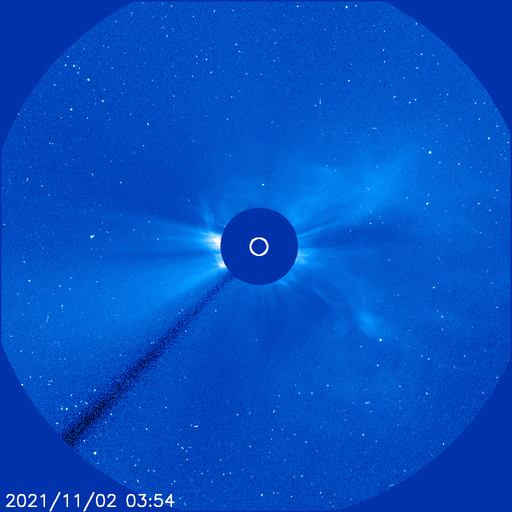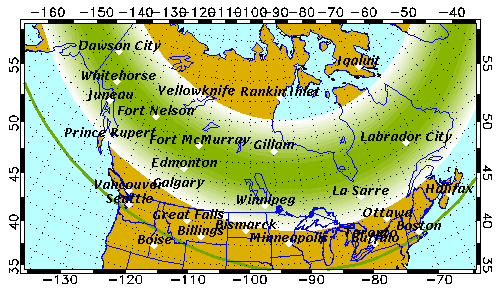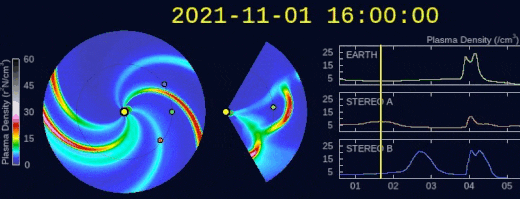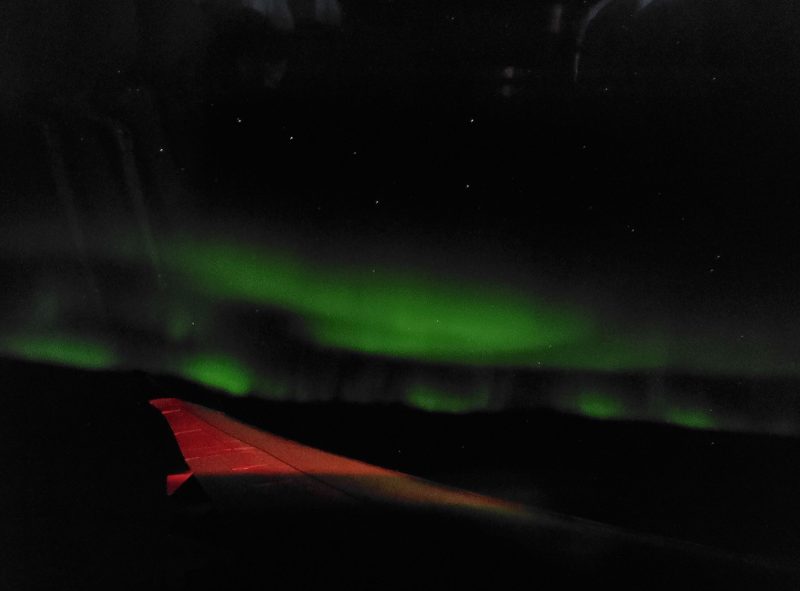
Aurora alert on an increasingly active sun
Only days after the last coronal mass ejection (CME) from the surface of the sun, with resulting aurorae, it’s time for a new one! This bump-up in activity is expected as Solar Cycle 25 continues to ramp up. On November 2, 2021, a solar flare in the now-visible sunspot region called AR2891 launched another CME toward Earth. The culprit solar flare behind the CME is classified as an M1.7 flare. And the movie above shows the CME as it emerges from the surface of the sun like a halo. More about that below. SpaceWeather.com reports:
If [the NOAA Space Weather Prediction Center’s] model is correct, the combined CME will make first contact with our planet around 23:00 UTC [7 p.m. EDT] on November 3, with geomagnetic storms commencing on November 4.
Note that, for those of us in North America, the impact time above indicates aurorae from this CME could begin overnight on November 3, extending into November 4.

Researchers expect these solar charged particles will interact with Earth’s magnetic field to cause category G2 geomagnetic storms and a subsequent increased display of aurorae, or northern lights.
Why does Tony Phillips at SpaceWeather.com use the word “combined” in the quote above? Turns out this cloud of charged particles from the sun isn’t just an ordinary CME, but also a cannibal CME sweeping up older and slower CME’s in front of it. More about that below, too.

About these CMEs: Halos and cannibals
We mentioned the word “halo” above. This particular CME is considered a halo CME, because it appears as an expanding halo around the sun as we see it leaving the sun’s surface. Imagine you’re face to face with someone who blows a giant bubble of chewing gum the size of their head. The bubble frames their face in a halo from our point of view, because the bubble is aimed directly at us. In other words, this time, Earth is in the bullseye. Even though Earth will have traveled a bit in its orbit by the time the CME arrives a few days later, the CME is so much larger in extent that we will still be well within it.
And not only that, it is also a cannibal CME! A cannibal version of a CME is a CME that moves faster and thus able to sweep up and assimilate slower CMEs in front of them. Thus when they pile up on their way toward us, these combined CMEs contain strong magnetic fields and can spark even more impressive geomagnetic storms.
Spaceweather.com reported that:
… the slower CMEs, in this case, were hurled into space on November 1 and 2 by departing sunspot AR2887.

Bottom line: If you’re at a high latitude, keep your eyes open for aurorae in the next few days. The sun sent out a halo coronal mass ejection on November 2, 2021, due to arrive at Earth late in the day on November 3, with aurorae commencing on November 4 (possibly the morning of November 4).
Via NOAA Space Weather Prediction Center
The post Aurora alert! Another CME on its way first appeared on EarthSky.
0 Commentaires